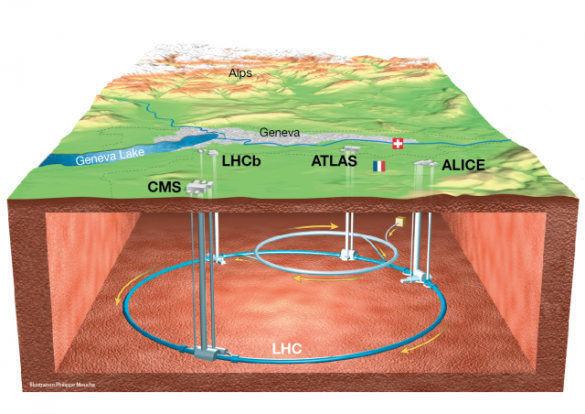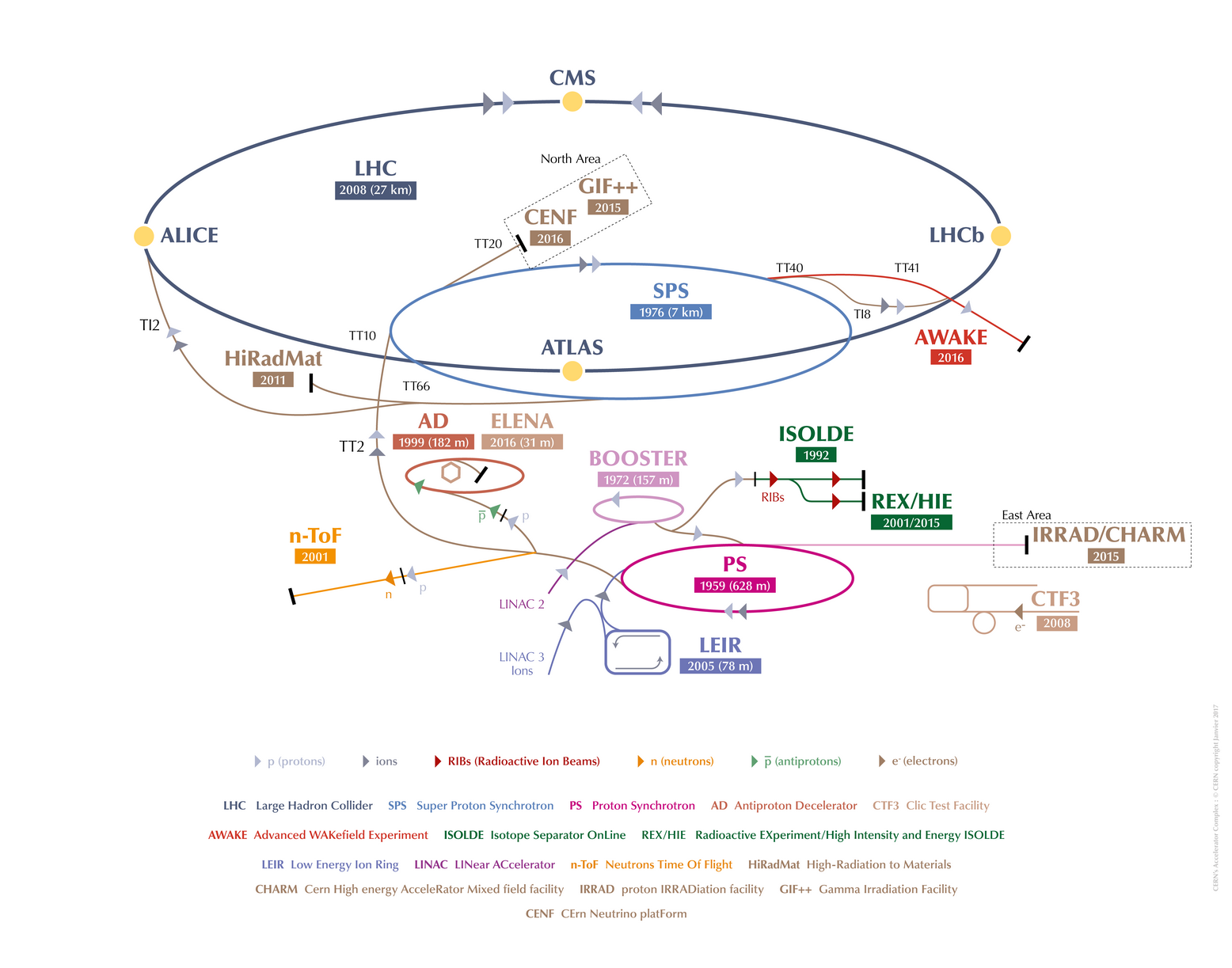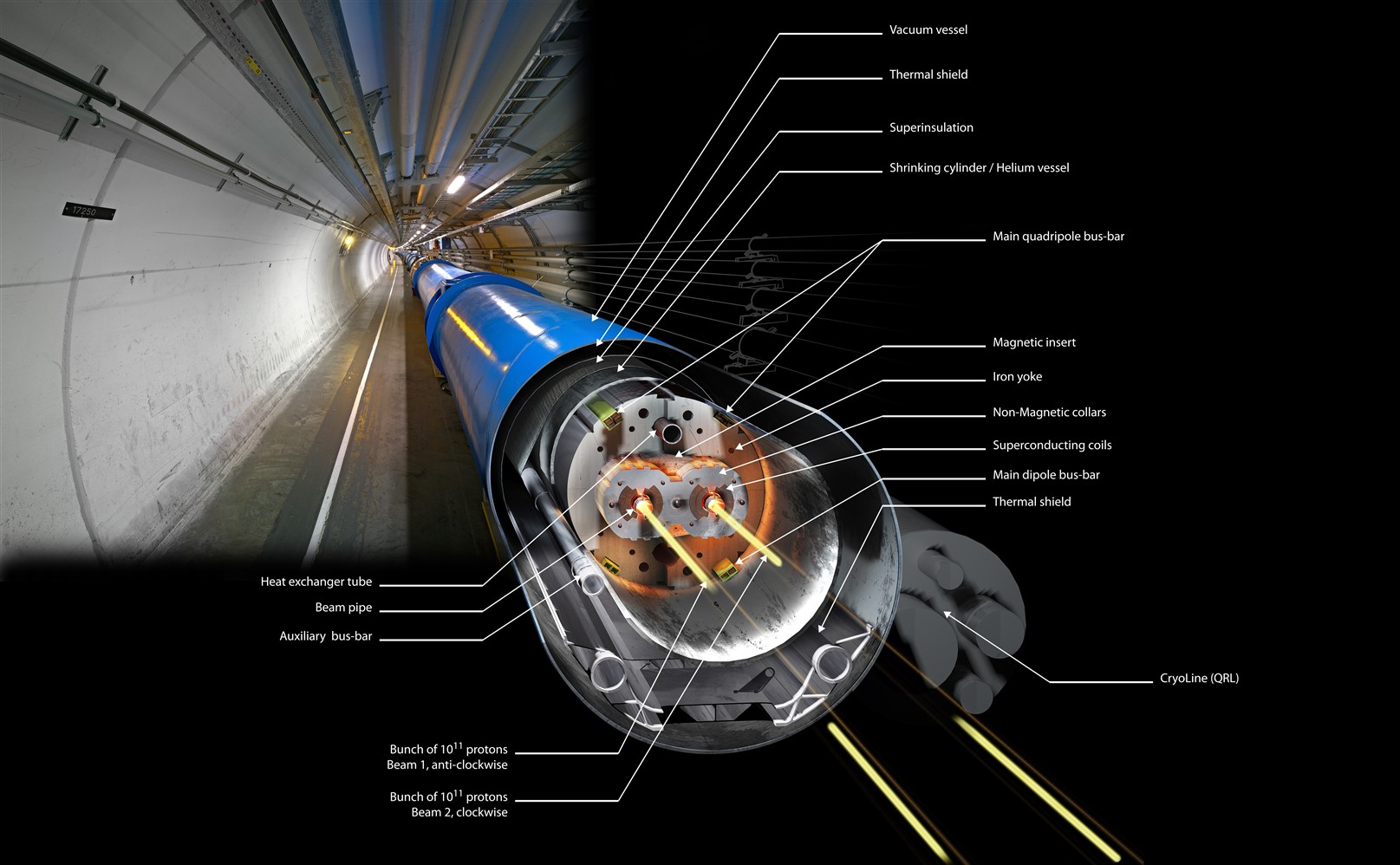
A schematic depiction of the LHC. Source: CERN.
In order to find answers to the fundamental questions about the nature of our Universe, we must study the properties of all elementary particles of the Standard Model. Unfortunately, nearly everything that we can observe in our Universe is made up of only four of these elementary particles, up and down quarks, electrons and photons. This is because our macroscopic world exists in a comparatively low-energy regime. The last time when the conditions in the Universe were such that all fundamental particles could be found in nature was a microsecond after the Big Bang, the moment of the birth of our Universe nearly 14 billion years ago. As it is impossible to see this far back into the past using cosmological observations, we must create our own miniature Big Bangs in order to study the properties of all fundamental particles. This can be done using particle colliders. These are huge machines where charged particles are accelerated to close to the speed of light and then made to collide. These collisions result in a huge amount of energy being deposited in an incredibly small volume of space, momentarily creating conditions similar to those at the birth of our Universe. The largest and most powerful particle accelerator that has ever been built is the Large Hadron Collider (LHC).
The LHC is a 27 kilometre long circular particle accelerator situated around 100 metres under the Franco-Swiss border near Geneva, Switzerland. It is the current flagship project of the European Organisation for Nuclear Research (CERN). It accelerates and collides beams of protons, and occasionally lead ions, which are composite particles called hadrons. The protons are accelerated to 99.99999% of the speed of light and made to collide in designated locations around the ring. Each of the counter-rotating beams contains nearly 3000 bunches of particles, each containing around 100 trillion protons. These bunches circulate the ring only 25 nanoseconds apart, which means that, when fully filled, the LHC can deliver 40 million proton bunch collisions every second. Capable of delivering collision energies of up to 14 TeV, the LHC is not only the largest and most powerful particle accelerator, but, arguably, the largest man-made device ever created.
The LHC hosts four major experiments, ALICE, ATLAS, CMS and LHCb. These experiments are colossal machines which surround the collision points. These devices can be thought of as extremely complex and advanced cameras, which take snapshots in time to provide the physicists with the data necessary to study the elementary particles created in the collision events. The four major LHC experiments have different physics goals. ALICE is a dedicated heavy-ion experiment and focuses on exploring the extended hot nuclear matter and its effects on the production and behaviour of the fundamental particles. LHCb’s main focus is flavour physics. This is the study of the production and decay rates of particles containing b and c quarks, in which the slight difference between particles and their anti-partners, so-called matter-antimatter asymmetry, is best observed. ATLAS and CMS are general purpose detectors (GPDs) and the physics goals of these experiments are incredibly diverse. On the one hand these experiments focus on precision physics and pushing our understanding of the SM to its limit. On the other, they focus on attempting to find the evidence of the Beyond the Standard Model (BSM) physics, often called New Physics. These new physics searches focus on a variety of topics, such as supersymmetry, dark matter and extra dimension searches.
The RTU team is involved in the physics programme at the LHC as a member of the CMS collaboration.
 |
 |
| The particle accelerator complex at CERN. Source: CERN. | The cross-secitonal view of an LHC dipole magnet inside the LHC tunnel. Source: CERN. |